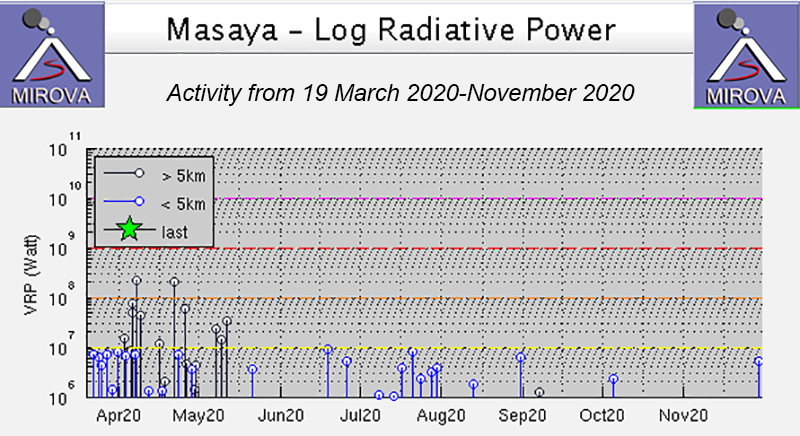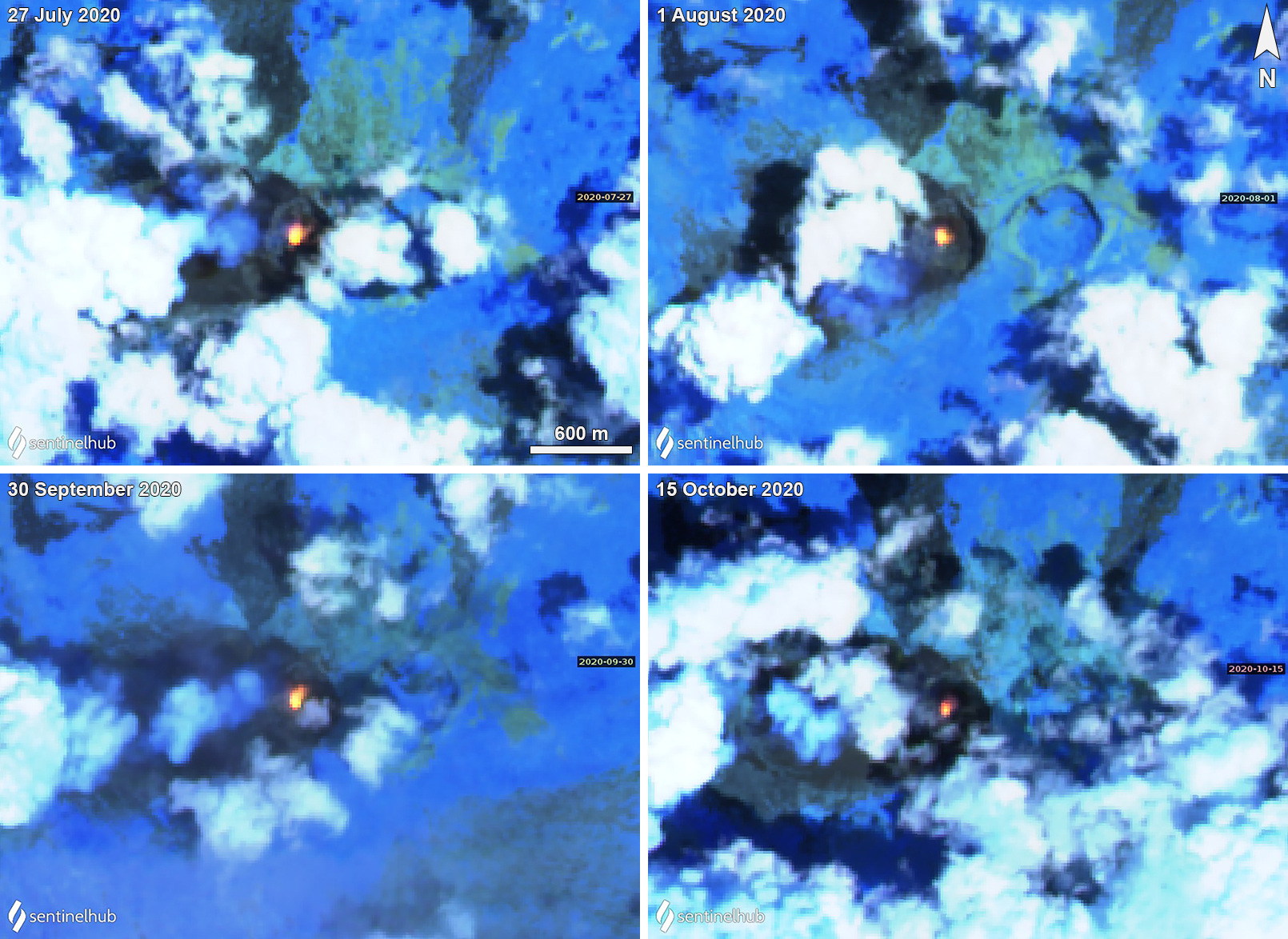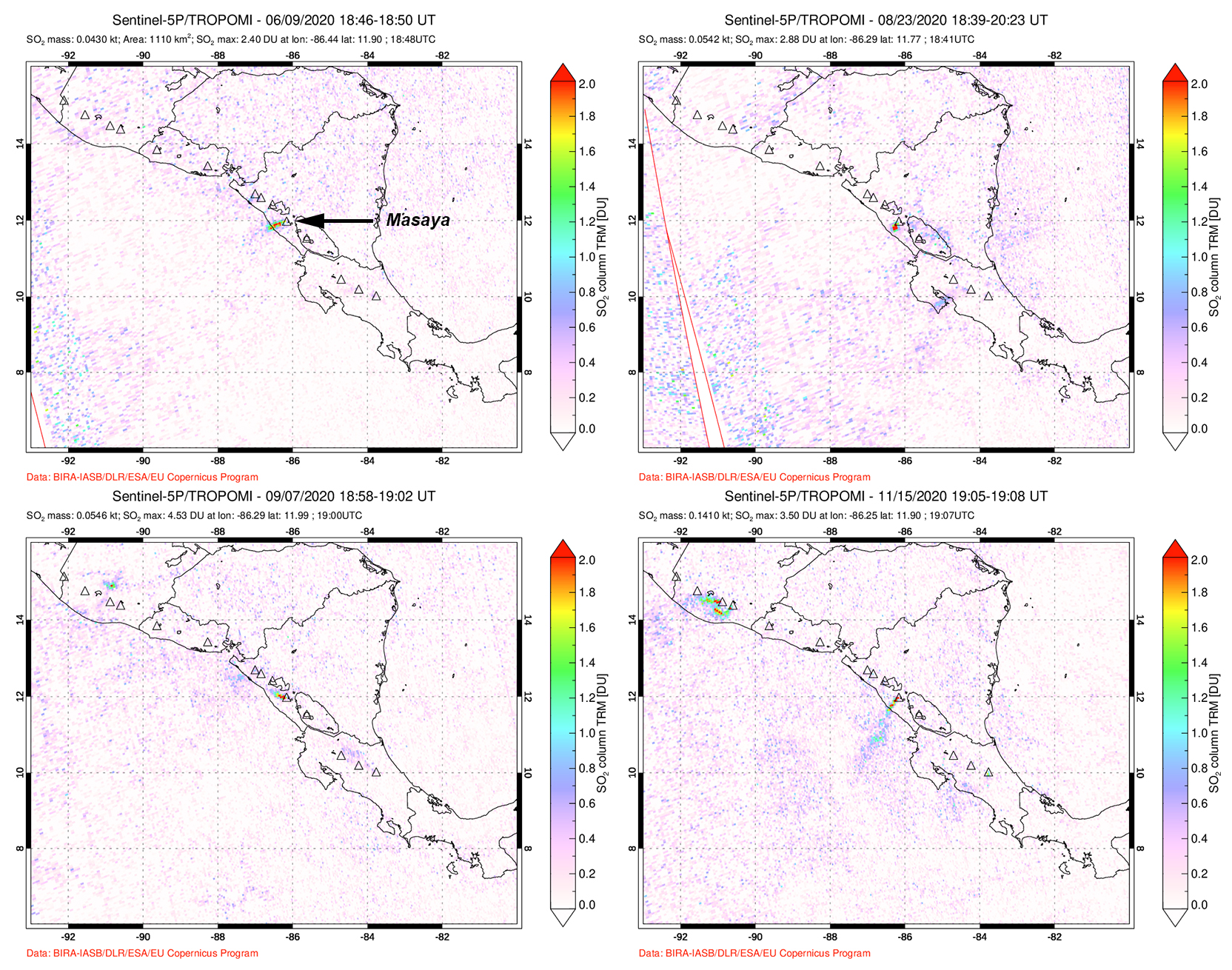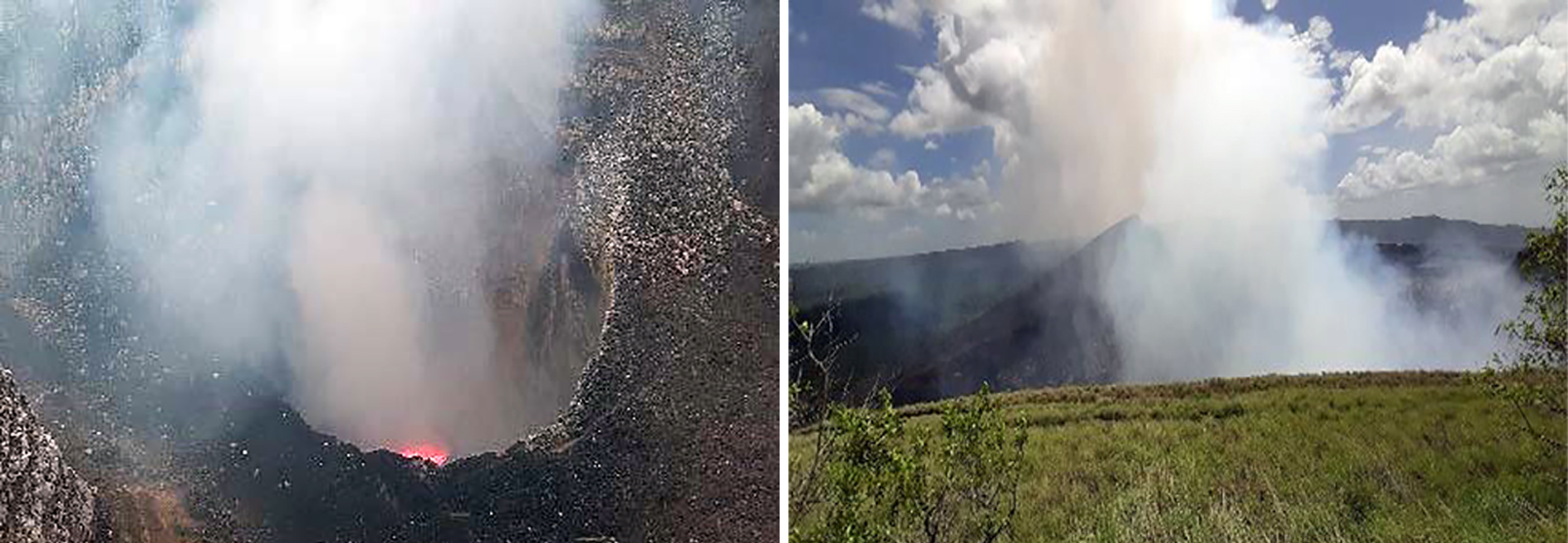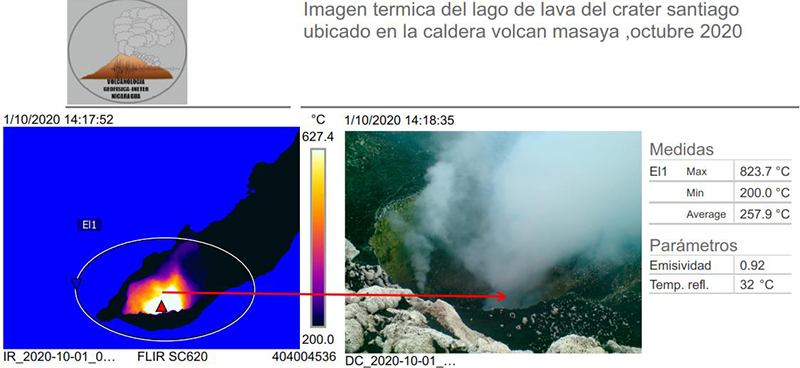Report on Masaya (Nicaragua) — December 2020
Bulletin of the Global Volcanism Network, vol. 45, no. 12 (December 2020)
Managing Editor: Edward Venzke.
Edited by Kadie L. Bennis.
Masaya (Nicaragua) Lava lake continues accompanied by gas-and-steam emissions during June-November 2020
Please cite this report as:
Global Volcanism Program, 2020. Report on Masaya (Nicaragua) (Bennis, K.L., and Venzke, E., eds.). Bulletin of the Global Volcanism Network, 45:12. Smithsonian Institution. https://doi.org/10.5479/si.GVP.BGVN202012-344100
Masaya
Nicaragua
11.9844°N, 86.1688°W; summit elev. 594 m
All times are local (unless otherwise noted)
Masaya, located in Nicaragua, includes the Nindirí, San Pedro, and San Juan craters, as well as the currently active Santiago crater. The Santiago crater has contained an active lava lake since December 2015 (BGVN 41:08), and often produces gas-and-steam emissions. Similar activity is described in this report which updates information from June through November 2020 using reports from the Instituto Nicareguense de Estudios Territoriales (INETER) and various satellite data.
Volcanism at Masaya has been relatively quiet and primarily characterized by an active lava lake and gas-and-steam emissions. From January to November 2020 there were 8,551 seismic events recorded. A majority of these events were described as low-frequency earthquakes, though a few were classified as volcano-tectonic. MIROVA (Middle InfraRed Observation of Volcanic Activity) analysis of MODIS satellite data showed few low-power thermal anomalies during June through November (figure 87). A small cluster of low-power thermal activity was detected in July and consisted of seven thermal anomalies out of a total of thirteen thermal anomalies recorded during the reporting period. Thermal activity was also observed in Sentinel-2 satellite imagery, which showed a constant thermal anomaly in the Santiago crater at the lava lake during July through October, occasionally accompanied by a gas-and-steam plume (figure 88). Small and intermittent sulfur dioxide emissions appeared in satellite data during each month of the reporting period, excluding July, some of which exceeded two Dobson Units (DU) (figure 89). On 6 July, 11 and 13 August, 7 September, during October, and 9 and 13 November, INETER scientists took SO2 measurements by making several transects using a mobile DOAS spectrometer that sampled for gases downwind of the volcano. Average values during these months were 1,202 tons/day (t/d), 1,383 t/d, 2,089 t/d, 950 t/d, and 819 t/d, respectively, with the highest average reported in September.
During June and July persistent gas-and-steam emissions were reported rising above the open lava lake in the Santiago crater (figure 90). On 20 June INETER scientists measured the gases on the S side, inside the Nindirí crater (SW side), and La Cruz (NW side). A perceptible gas-and-steam plume was noted rising above the Nindirí crater and drifting W. Crater wall collapses were observed on the E wall of the Santiago crater; the lava lake remained, but the level of the lake had decreased compared to previous months. During July, thermal measurements were taken of the fumaroles and near the lava lake using a FLIR SC620 thermal camera. INETER reported that the temperature measured 576°C, which had significantly increased from 163°C noted in the previous month.
Small crater wall collapses were detected on the NW and E wall of the Santiago crater, accompanied by abundant gas-and-steam emissions during August (figure 91). On 7 August thermal measurements were taken of the fumaroles and near the lava lake, which showed another temperature increase to 771°C. Continuous collapse of the crater walls began to excavate depressions in the crater floor and along the walls. Similar activity was observed in September with abundant gas-and-steam emissions in the Santiago crater, as well as collapses of the E wall (figure 91). Temperature measurements taken during this month had decreased slightly compared to August, to 688°C.
Activity in October and November remained consistent with continued wall collapses in the Santiago crater, particularly on the S and E wall, due to fractures in the rocks and erosion, accompanied by gas-and-steam emissions. INETER reported that the level of the lava lake had decreased due to continuous internal wall collapses, which had caused some obstruction in the lava lake and allowed for material to accumulate within the crater. On 9 October thermal measurements were taken of the fumaroles and near the lava lake using a FLIR SC620 thermal camera (figure 92). The temperature had increased again compared to September, to 823°C. By 26 November, the temperature had decreased slightly to 800°C, though activity remained similar.
Geological Summary. Masaya volcano in Nicaragua has erupted frequently since the time of the Spanish Conquistadors, when an active lava lake prompted attempts to extract the volcano's molten "gold" until it was found to be basalt rock upon cooling. It lies within the massive Pleistocene Las Sierras caldera and is itself a broad, 6 x 11 km basaltic caldera with steep-sided walls up to 300 m high. The caldera is filled on its NW end by more than a dozen vents that erupted along a circular, 4-km-diameter fracture system. The Nindirí and Masaya cones, the source of observed eruptions, were constructed at the southern end of the fracture system and contain multiple summit craters, including the currently active Santiago crater. A major basaltic Plinian tephra erupted from Masaya about 6,500 years ago. Recent lava flows cover much of the caldera floor and there is a lake at the far eastern end. A lava flow from the 1670 eruption overtopped the north caldera rim. Periods of long-term vigorous gas emission at roughly quarter-century intervals have caused health hazards and crop damage.
Information Contacts: Instituto Nicaragüense de Estudios Territoriales (INETER), Apartado Postal 2110, Managua, Nicaragua (URL: http://www.ineter.gob.ni/); MIROVA (Middle InfraRed Observation of Volcanic Activity), a collaborative project between the Universities of Turin and Florence (Italy) supported by the Centre for Volcanic Risk of the Italian Civil Protection Department (URL: http://www.mirovaweb.it/); NASA Global Sulfur Dioxide Monitoring Page, Atmospheric Chemistry and Dynamics Laboratory, NASA Goddard Space Flight Center (NASA/GSFC), 8800 Greenbelt Road, Goddard, Maryland, USA (URL: https://so2.gsfc.nasa.gov/); Sentinel Hub Playground (URL: https://www.sentinel-hub.com/explore/sentinel-playground).


